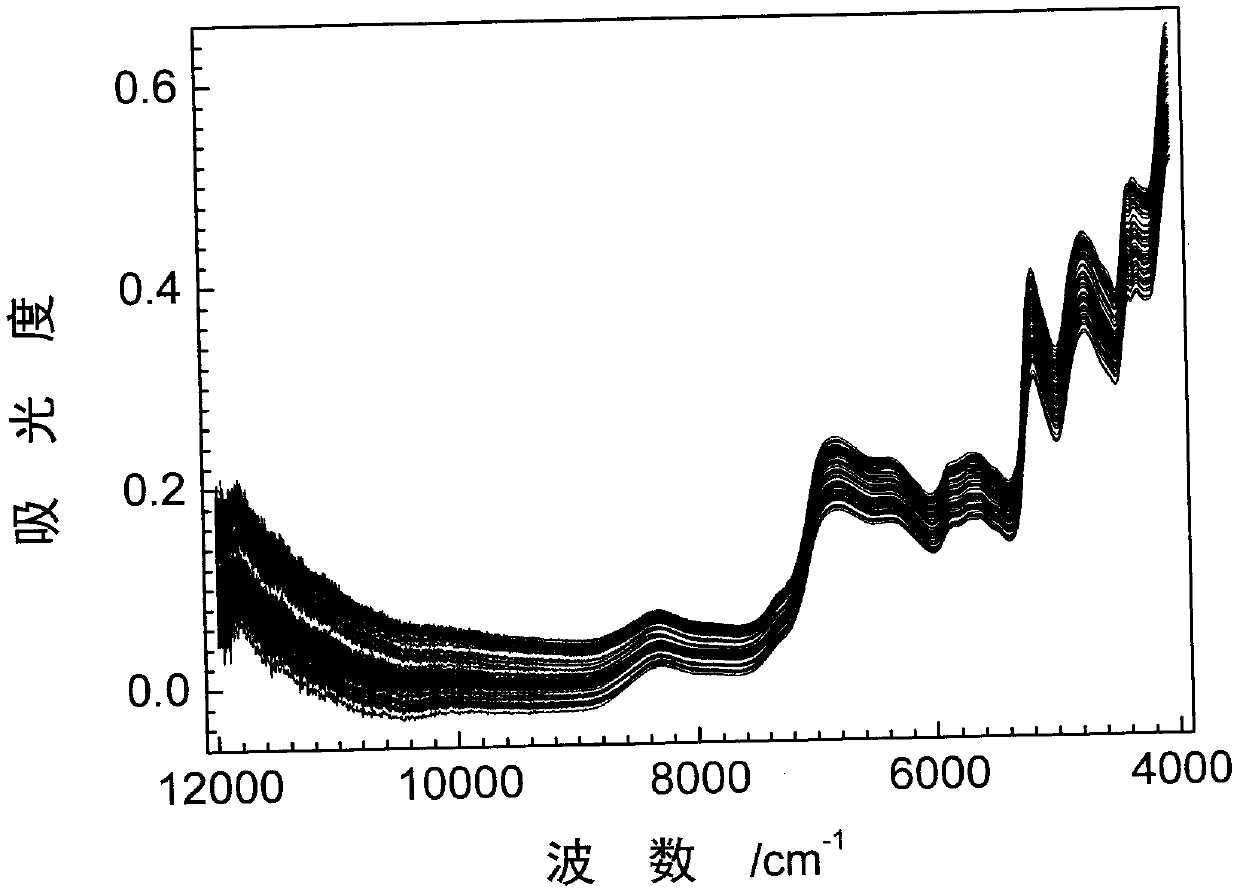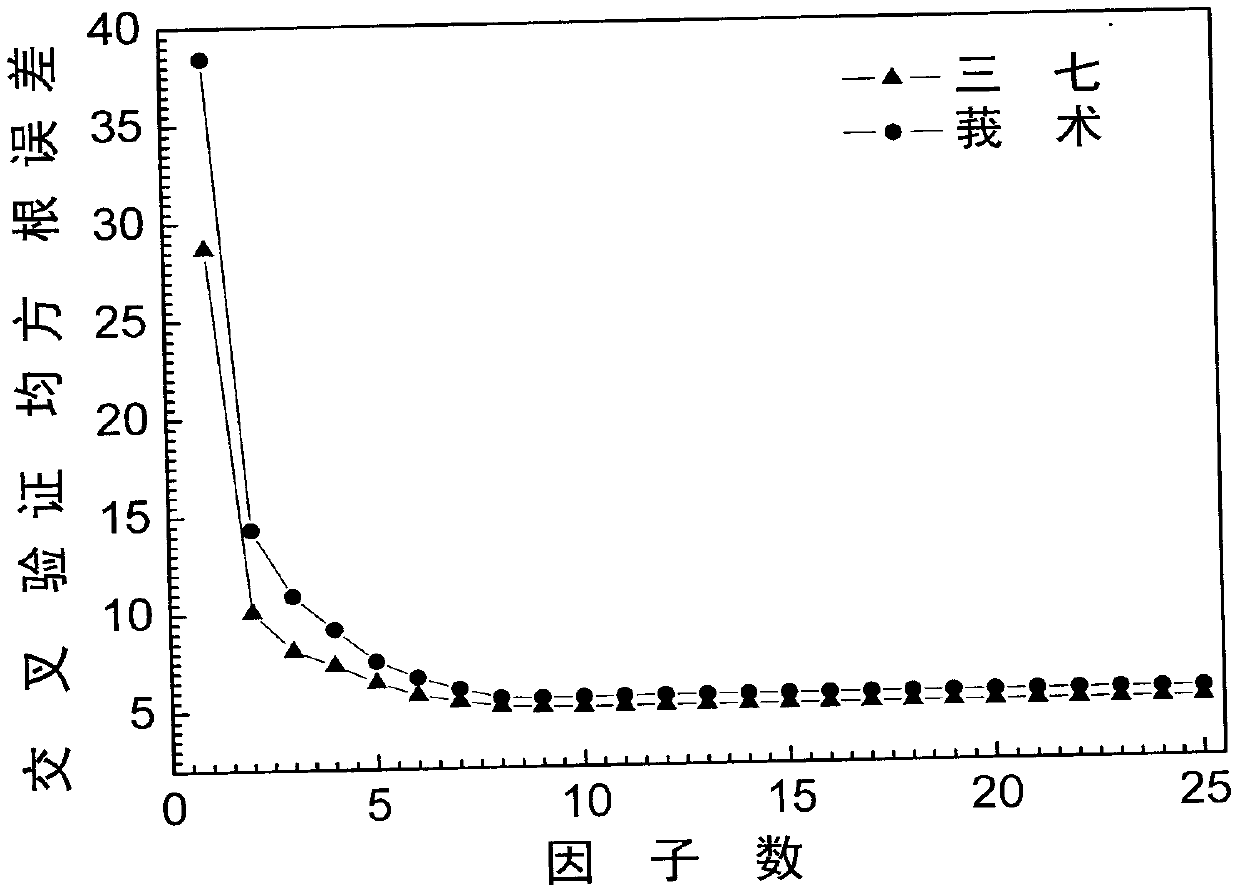Method for quantitative analysis of multicomponent-adulterated pseudo-ginseng based on near infrared spectroscopy
A technology of near-infrared spectroscopy and near-infrared spectrometer, which is applied in the field of quantitative analysis of multivariate doped Panax notoginseng based on near-infrared spectroscopy
- Summary
- Abstract
- Description
- Claims
- Application Information
AI Technical Summary
Problems solved by technology
Method used
Image
Examples
Embodiment 1
[0032] This example is applied to the quantitative analysis of the binary adulterated samples of Panax notoginseng and Curcuma. The specific steps are as follows:
[0033] 1) Prepare the experimental samples and collect the near-infrared spectra of the samples
[0034] Prepare curcuma and three grades of high-grade, medium-grade and low-grade notoginseng, respectively grind the dried medicinal materials, pass through a 120-mesh sieve, and store them in a desiccator for later use. The concentration range of notoginseng and curcuma is designed to be 0%-100%, the main interval is 5%, and 3 samples are prepared for each concentration ratio, and the notoginseng used in the three samples are randomly numbered from high, medium and low grades respectively Panax notoginseng preparation, a total of 75 samples were prepared. According to the mass percentage designed for each sample, use an analytical balance to weigh, record the actual mass of each component, and then calculate the ac...
Embodiment 2
[0045] This example is applied to the quantitative analysis of three-component adulterated samples of Panax notoginseng, curcuma and turmeric. The specific steps are as follows:
[0046] 1) Prepare the experimental samples and collect the near-infrared spectra of the samples
[0047] Prepare curcuma, turmeric, and three grades of high, medium, and low-grade notoginseng, grind the dried medicinal materials, pass through a 120-mesh sieve, and store them in a desiccator for later use. The concentration range of notoginseng, curcuma and turmeric is designed to be 0%-100%, and the main interval is 5%. Three samples are prepared for each concentration ratio. Randomly numbered Panax notoginseng was prepared, and a total of 66 samples were prepared. According to the mass percentage designed for each sample, use an analytical balance to weigh, record the actual mass of each component, and then calculate the actual mass percentage of each component. Set the near-infrared spectrum sam...
Embodiment 3
[0060] This example is applied to the quantitative analysis of four-component adulterated samples of Panax notoginseng, Zezhu, curcuma longa, and Galangal. The specific steps are as follows:
[0061] 1) Prepare the experimental samples and collect the near-infrared spectra of the samples
[0062] Prepare curcuma, turmeric, galangal, and three grades of high, medium, and low-grade notoginseng, grind them separately, pass through a 120-mesh sieve, and store them in a desiccator for later use. Design the data set for the adulteration of Panax notoginseng, Curcuma longa and Galangal. In the data design, first determine the mass percentage and concentration interval of Panax notoginseng. The mass percentage of Panax notoginseng is 100-0%, and the main interval is 5%. The mass percent of each component. For the sum of the percentages of all samples of the four components, subtract the sum of the percentages of all samples of the notoginseng component, and the remaining part is equ...
PUM
 Login to View More
Login to View More Abstract
Description
Claims
Application Information
 Login to View More
Login to View More - R&D
- Intellectual Property
- Life Sciences
- Materials
- Tech Scout
- Unparalleled Data Quality
- Higher Quality Content
- 60% Fewer Hallucinations
Browse by: Latest US Patents, China's latest patents, Technical Efficacy Thesaurus, Application Domain, Technology Topic, Popular Technical Reports.
© 2025 PatSnap. All rights reserved.Legal|Privacy policy|Modern Slavery Act Transparency Statement|Sitemap|About US| Contact US: help@patsnap.com



